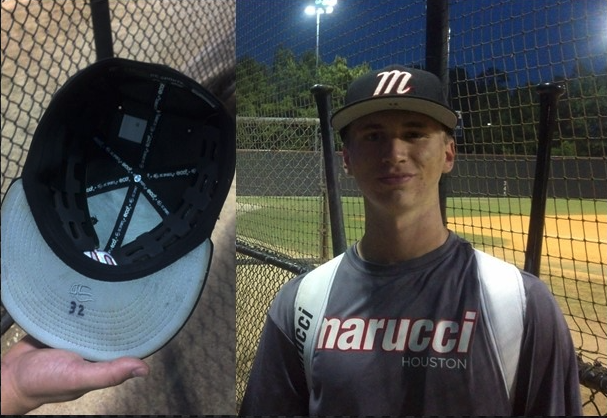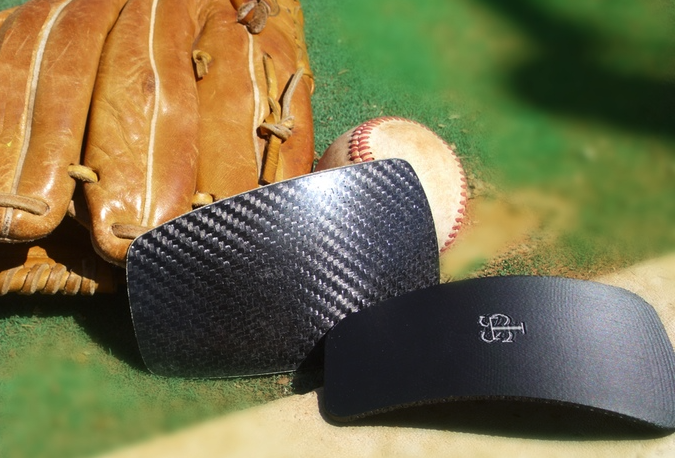Last August, Miami Marlins pitcher Dan Jennings was hit in the head by a line drive – a 101-mph (163-km/h) line drive. The horrifying video clip made any viewer hope that such an incident would never happen again. But it already has. While the risk is statistically low, comeback line drives to the head occur virtually every season in professional baseball. The MLB is trying to find a workable solution, but so far, approved protective head gear has proven bulky, awkward and extremely unpopular. Jennings is one of the major leaguers that has worked with Safer Sports Technologies in trying a lighter, lower profile solution: a carbon fiber protector that slides inside a regular ball cap.
According to Safer Sports Technologies, 12 active MLB pitchers have been hit in the head with line drives. Ball speeds can reach triple digits, and injuries have included concussions, internal bleeding, fractures and epidural hemorrhaging. The video clips are certain to make you cringe.
While the risk isn't significant from a statistical standpoint, it is dangerous enough that the MLB has been searching for solutions. Last year, the league approved Isoblox padding for optional use by pitchers, but only one pitcher actually wore it. The padding makes the pitcher's hat look cartoonishly massive and awkward and appears like it could hamper focus and performance.
Safer Sports Technologies believes it has a solution that can both effectively protect pitchers and keep them comfortable on the mound. Built from a blend of carbon fiber and Kevlar with high-density polyurethane padding, the company's Head Guard is a curved protective piece that fits inside a standard hat's sweat liner. It weighs less than 2 oz (57 g) and covers the most exposed portion of the pitcher's temple and forehead, from above the ear to the middle of the forehead.

The Head Guard offers less coverage than competitors like Unequal Technologies' Dome insert, but it's designed to be lighter in weight while effectively protecting the area of the head that faces the batter during the pitcher's follow through. Pitchers can also opt to wear a pair of Head Guards to cover the entire forehead from ear to ear.
Unlike Isoblox padding, SST's Head Guard has not received official MLB approval. Company founder Matt Meier tells us that it has no immediate plans to submit the design for MLB testing but may pursue it in the future. The league allows pitchers to wear non-approved head protection so long as that gear doesn't violate any other rules or agreements, and SST has been working with MLB teams and individual pitchers. Meier says that the company has not had any problems in working within the league.
SST says that its product has been used by professional pitchers, including Jennings, who now pitches for the Chicago White Sox, and Houston Astros pitcher Collin McHugh, who has not been hit in the head but likes the peace of mind that the protector provides. McHugh played high school baseball with Meier.
"It covers that spot [that's exposed] when you rotate," McHugh explained to MLB.com in April. "It's hard to get the glove back up there, and the vast majority of injuries happen on that side. Hopefully, I'll never have to see if it works or not. I think it's a great product and something I'll probably never stop wearing."
The problem of pitcher head injuries may be most visible in professional baseball, but the risk isn't limited to the highest levels of the game. SST also offers a youth-level head guard designed for children 12 and under. The youth model fits hat sizes up to 7, while the pro-level model fits hat sizes 7+ and is aimed at ball players from 13 years old through to professional level.
SST is trying to raise money to expand its manufacturing capabilities from hand building to full-scale production. Its Kickstarter campaign offers both youth (starting at US$60 per pair) and 13+ (starting at $80 per pair) models.

The names of the Head Guards are a bit confusing because SST is in the process of rebranding its youth and pro-level models to "Prospect" and "Pro X" from "Performance" and "Pro Performance," respectively. The original Performance models were hand-built with a glossy surface, and the new models will go into production in July using an injection molding process. The Prospect and Pro X models have a matte black surface. Both sets of models are available via the Kickstarter campaign, assuming all goes to plan.
"Structurally, the Youth models have a smooth surface and are built for game speeds as seen in competition levels up to approximately 12 years old," explains Meier. "The Pro models have a 'ribbed' or 'caged' surface that minimizes potential contact points from an impact against the head. This technology adds to the strength and structural integrity of the guard, allowing it to withstand impacts of approximately 94 mph (151 km/h)."
Ninety-four miles per hour is fast, but it's short of the speeds that head-hunting comeback line drives have been clocked at in the MLB. While the SST guards are definitely lower profile than other solutions, it remains to be seen how effective they are at protecting against the impact of a baseball.
Source: SST






